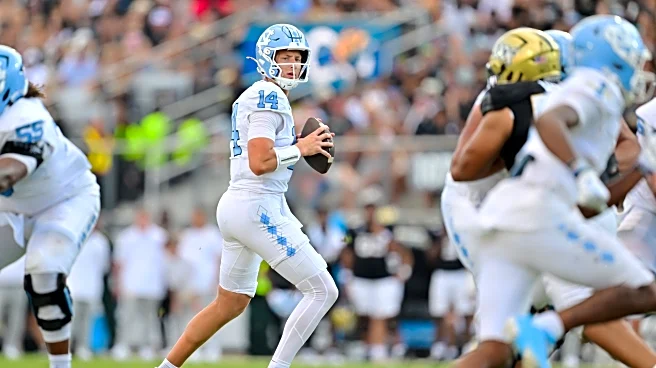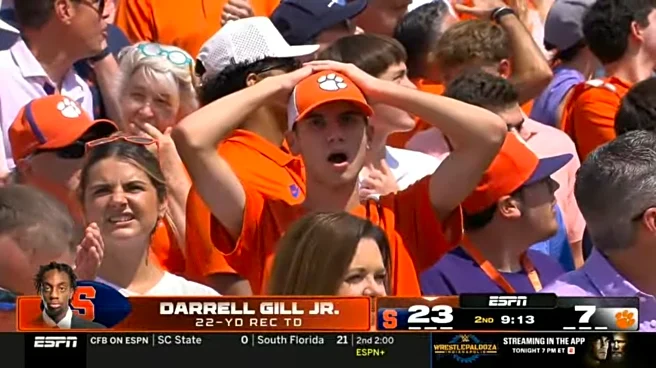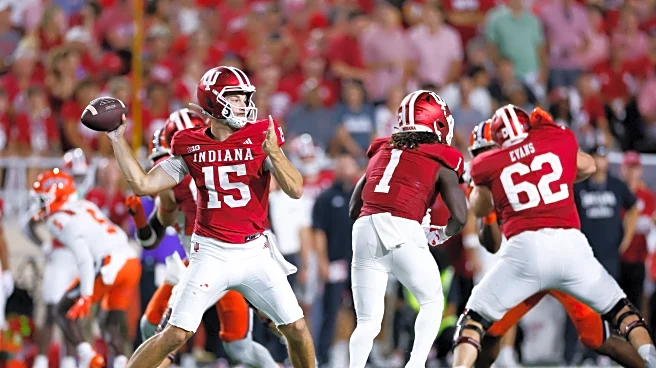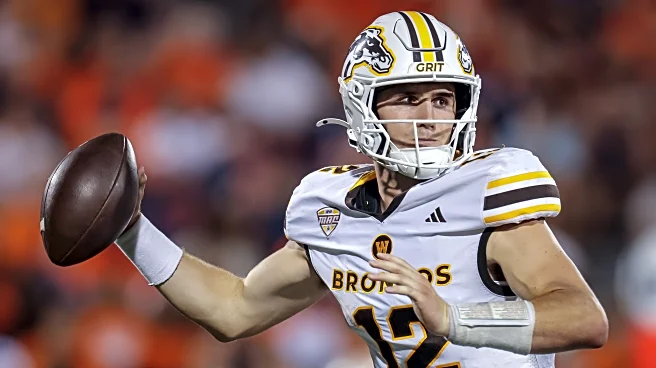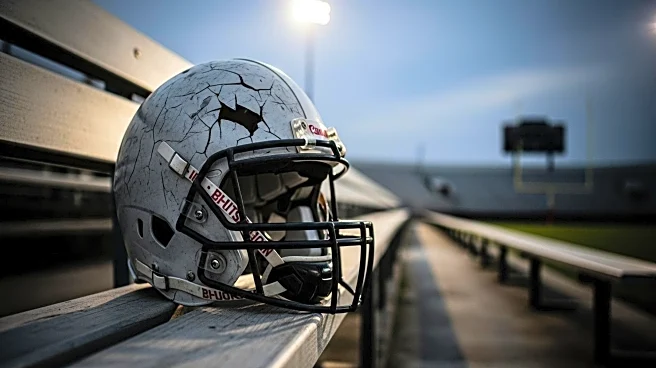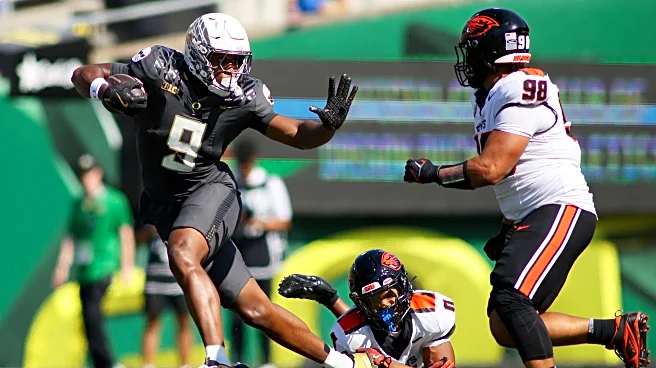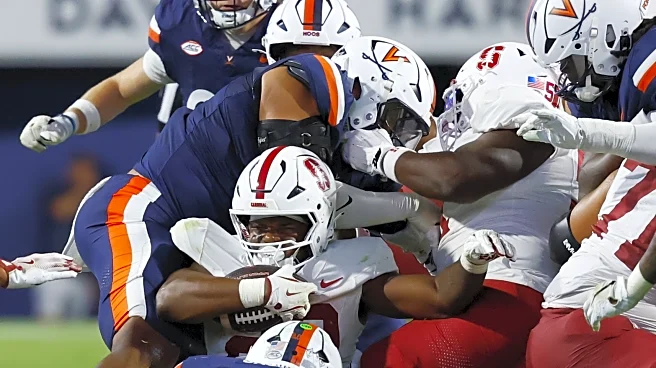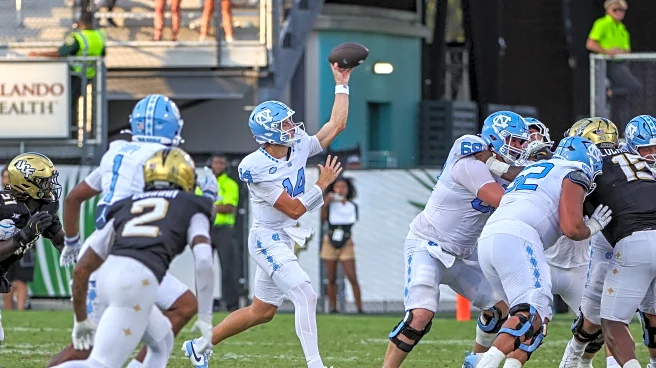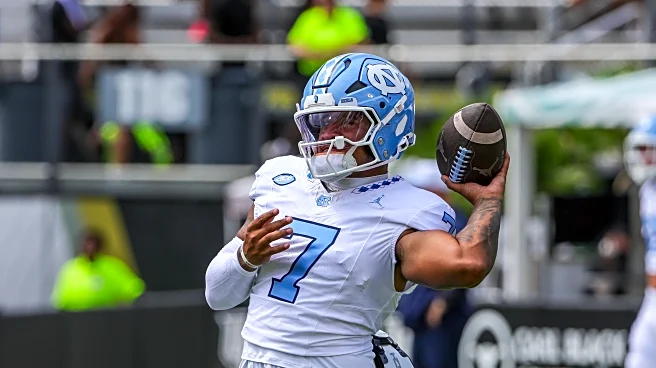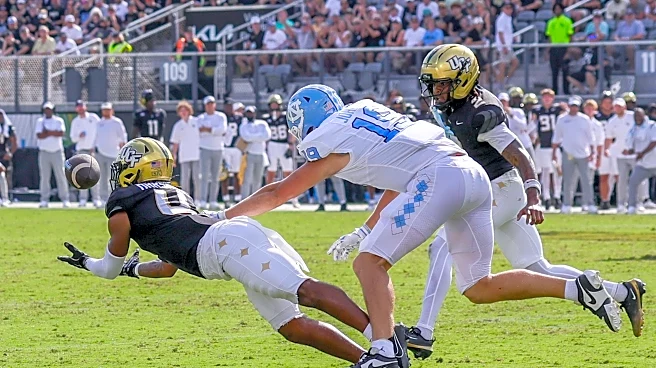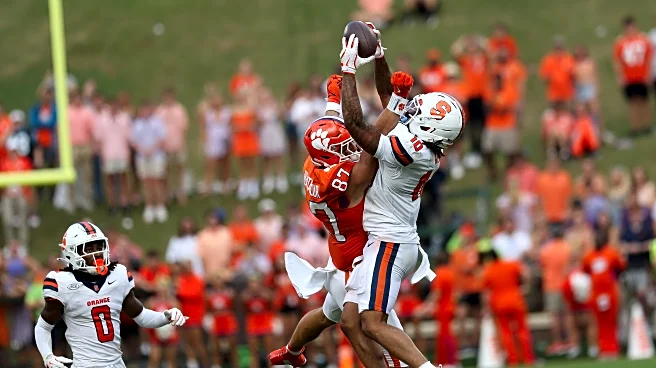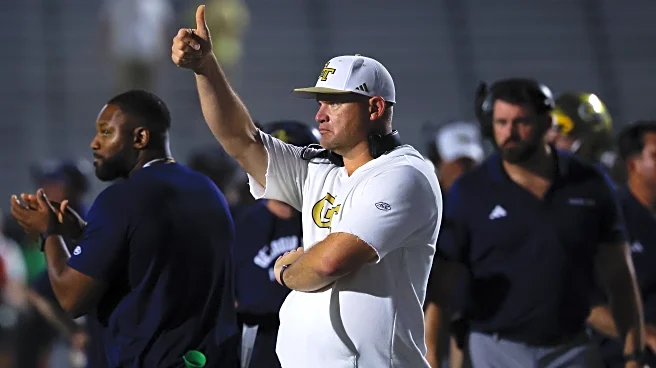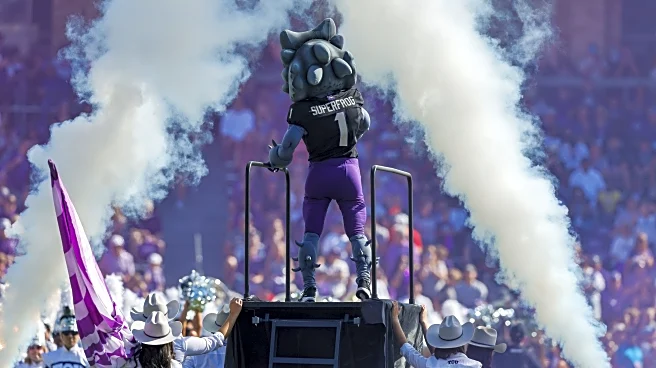We still don’t know what Gio Lopez’s status is after the injury he suffered in the second half against UCF. We know it’s considered “not season-ending,” but that could mean anything from an early-mid October return with just one game missed to him not being able to play until a game or two before the season ends. Whatever the case may be, I do suspect that he will miss at least one game — if there was optimism that he would be back in action by the time of the UNC-Clemson game on October 4th, I imagine
that would have been explicitly part of the sourced information. So, I’m writing this article under that assumption; that Lopez will miss at least one game and very possibly more.
Allow me to walk down memory lane for a second. The last time UNC was having as wretched a season as this one has appeared to be, in 2018, Nathan Elliott had been pressed into service as UNC’s starting quarterback despite having clearly shown the previous year that he wasn’t an ACC-caliber signal-caller. His first two games went maybe even worse than expected, but then he looked like a positive player in a win against Pittsburgh that had commentators, press, and optimistic fans gushing about how he’d just needed time to get comfortable and was ready to be at least a serviceable quarterback at the power conference level. At the time, nearly seven years ago to the day, I wrote that it was fool’s gold, that Elliott had been propped up by a gameplan that asked basically nothing of him, a very bad opposing defense, and skill position players making incredible plays to erase his mistakes. Against a more talented Miami team the next game, Elliott was benched in the first quarter after botching a red zone drive on his first possession and gifting the Canes a touchdown via fumble return on his next. In other words, I was proven right almost immediately in even more horrific fashion than I expected. For the rest of the season, UNC continued to lose games in no small part because the coaches went back to rightfully not trusting Elliott to throw anything more than 5 yards downfield, and opposing defensive coaches keyed in to neuter anything UNC was left able to do.
The situation’s a little different, but I feel like history is repeating itself just a little in Chapel Hill when I see discussions about Gio Lopez and backup Max Johnson. Lopez has been obviously, untenably bad in his 6 or so quarters of play. His footwork is all over the place, he’s blind to pressure in the pocket and doesn’t have the mobility to escape it when he does notice it, his accuracy is scattershot, his throws look labored, he’s regularly late to pull the trigger and doesn’t throw with anticipation, and he’s turned the ball over four times in UNC’s two games against legitimate competition. Meanwhile, in backup duty after Lopez injuries in both of those games, Johnson has led a couple of scoring drives, throwing for 2 scores to Lopez’s 3 in less than half the attempts. Against TCU especially, Johnson looked like a capable game manager, getting the ball out quickly to his initial read and moving the chains with some consistency. The story writes itself — after starting last season looking every bit as unfit for this level as Lopez has before his own serious injury, it’s easy to root for him to be back in action and able to actually, positively contribute to this team. Between that and the absolute knowledge that something has to change about UNC’s quarterback situation, I don’t blame fans for imagining that Johnson should be the guy. Again, though, I’ve gotta say — any notion that Johnson really has moved the ball better than Lopez is, at best, fool’s gold.
Strictly statistically, the difference between the two is pretty minimal. Lopez is completing about 63% of his passes for 6.4 yards per attempt; Johnson is completing 67% of his passes for 5.7 YPA — in summary, Lopez is a smidge less accurate but has about made up for it by completing more passes downfield. Incidentally, you’d think Lopez’s numbers are inflated because Johnson didn’t play against Charlotte and Richmond, but those numbers are identical for Lopez even if I just use his snaps against TCU and UCF. Of course, there’s the elephant in the room — Johnson hasn’t turned the ball over. To that, I’d say a few things. First, that he’s been playing exclusively in garbage time, so defenses haven’t been playing him as aggressively. Second, that this feels to me as much a result of small sample size as anything. Johnson had 21 fumbles in his 3 years of football before transferring to UNC and a career turnover-worthy play percentage of 4.0% — for reference, that’d have been about 80th in the country last year. And I’m not easily going to forget the awful interception he threw against Minnesota last year, either. And third, that avoiding turnovers, while definitely a good thing, is not “moving the ball” more effectively, as has been the claim I’ve seen everywhere that this discussion seems to be being had.
Against the Knights, when Johnson had more than just a few snaps and the game wasn’t quite as out of reach as it was when he came in against TCU, Johnson completed 11/19 passes for 67 yards: 6.1 yards per completion, 3.5 yards per attempt. Simply put, those are unacceptable numbers for a quarterback playing any amount of extended time, even one who’s being trusted to do as little as possible. That’s just not moving the ball enough to do anything more than we’ve already seen from this offense. And while he was quarterback for the Heels’ sole touchdown drive on Saturday, the eye test showed me the same thing that the numbers do: an overly risk-averse quarterback who could either throw it to his first read after making sure it was open or hurriedly hit a checkdown, too late to try and give them any after-catch opportunity. He was as slow reacting to pressure as Lopez, though his frame and quicker release allowed those reactions to be a little better — he could more easily throw the ball away instead of taking a sack, but then again, his limited arm strength means those throwaways can become grounding penalties or picks pretty easily. And to top it all off, we know who Johnson is, because he’s in his sixth year of college football. He can stick to a script and hit stuff in the short areas of the field if it’s predetermined for him, and maybe that’s more than we’re seeing right now. But he was also the most-hit quarterback in the country in 2023 for a reason; his reaction to pressure could very well gum up the offense just like we’re seeing now.
But really, all of that is only the secondary reason that I’m so adamant that Johnson should not be the starter in the event that Lopez misses games. Even if you disagree with me that he’s not an appreciably better option at quarterback than Lopez, I think anybody would be hard-pressed to say that he’s capable of elevating the rest of this team to more than maybe scraping its way into bowl eligibility. If I thought this was a roster capable of winning more than 6 games with better than atrocious quarterback play, I’d be willing to allow for the possibility that Johnson could be the guy to get them there. However, because of how deeply flawed this roster and staff have combined to be so far, this season is already as good as lost. If Bill Belichick and company are serious about building something in Chapel Hill that lasts and want us to believe that it’ll be worth a really bad year to get there, then they have to show us actual evidence that they have an eye on the future. And do you know what doesn’t show an eye on the future? Playing a sixth-year senior at quarterback when you have two four-star freshmen on the bench.
That eye on the future was basically the only justification to keep Lopez as the starter as long as he was; as a redshirt sophomore, he could have played at least another year in Chapel Hill while the diamond of UNC’s 2026 high school class, Travis Burgess, rehabbed an injury and learned what he’d need to learn to play at this level. At this point, regardless of Lopez’s injury, his play is hampering the development of the rest of the roster. Receivers aren’t getting targeted accurately or consistently enough for their snaps to be useful experiences or study tape, while the offensive line is doing their job pretty well but to poor results because of his bad pocket management (through four games, Pro Football Focus gives UNC a very good 83.9 grade in pass blocking) and is at risk of not trusting their good habits if it results in pressures and negative plays anyways. Like I said earlier, it’s obvious that a change needs to be made, but that change has to be for next year, not for this one. That means you’ve got to see what you have with the quarterbacks who could be on the roster next year, and that is not Johnson but the freshman duo of Bryce Baker and Au’Tori Newkirk.
Baker is the easier guy to want to see, I suppose. He’s a local kid, was an Elite11 finalist, and was a key figure in Belichick first marketing himself to UNC fans as somebody who would take recruiting seriously — remember this introduction in the Smith Center? Indeed, some of my colleagues have already wondered on this website why we haven’t seen him already with the obvious issues at quarterback (or, alternatively, with the oodles of garbage time available in the Richmond game). And I did prefer him as a prospect to Newkirk: he’s got better in-pocket and out-of-pocket mobility to extend plays and make things happen, is a better post-snap processor and problem-solver, and I thought he was more accurate targeting the middle of the field. Newkirk, to his credit, throws a gorgeous and confident deep ball and is not afraid to test defenses vertically — he kind of reminds me of Michael Penix Jr or Hendon Hooker with the way he’s liable to just bomb away.
Newkirk was the quarterback who came in for a few garbage time snaps against Richmond (and threw an interception on his only passing attempt), but it’s hard to know if that’s because he’s ahead of Baker on the depth chart or simply because he’s a lefty like Lopez and Johnson and thus wouldn’t force the rest of the offense to flip mid-game, let alone the possible complication of Baker wanting a redshirt year. Whatever the case is, I’m not particularly fussy on which one of the two we see against Clemson, as long as we see one of them. Right now, the floor at quarterback couldn’t really be lower and the ceiling doesn’t appear to be much higher — it’s the perfect time to bring in a freshman with basically no expectations. The worst case scenario is that both aren’t ready and we’re back to where we are right now. There’s really no reason, then, especially with a bye week before the next game, that Belichick’s staff shouldn’t be looking for upside — for now and for the future. Indeed, not doing so would confirm to me, if not the entirety of UNC fandom, that Belichick isn’t taking this endeavor seriously. There simply has to be a reason that despite all the brouhaha, we’re currently seeing what looks like a bottom-10 UNC team all time.
